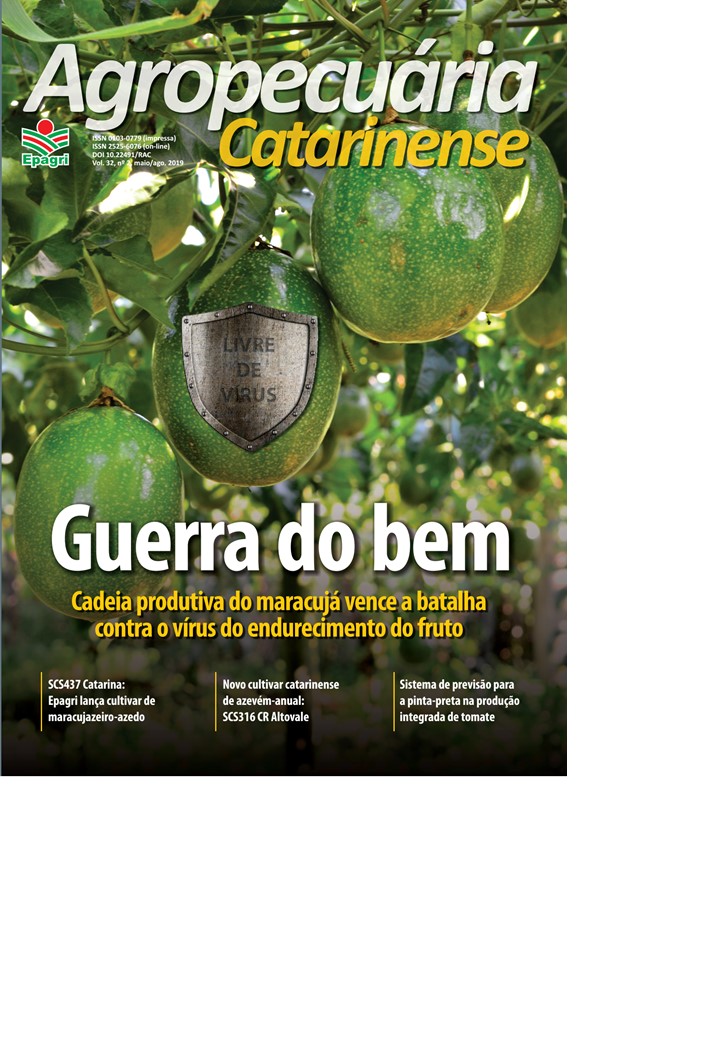Spikelet sterility and grain production of paddy rice genotypes submitted to low temperatures at microsporogenesis
Keywords:
Oryza sativa, emborrachamento, frio, linhagem, booting, cold, inbreedsAbstract
Abstract – Low temperatures reduce rice grain yield, especially when they occur at the crop microsporogenesis. This study was conducted aiming at identifying paddy rice genotypes tolerant to the cold stress at microsporogenesis. Seventeen genotypes from the Epagri’s breeding program were evaluated. The plants were grown in the greenhouse from sowing to microsporogenesis, when they were moved to the growth chamber for a 72-hour period of cold stress, with a night temperature of 12ºC and a day temperature of 15ºC. Each genotype had a control kept in the greenhouse with temperatures ranging from 25ºC to 30ºC during the whole crop cycle. Spikelet sterility and grain production were determined. Data were evaluated by Variance Analysis using the F test and averages were compared by the Skott Knott’s test at a 5% significance level. The inbreeds SC 854 and SC 850 showed potential to generate future cultivars tolerant to cold stress at microsporogenesis. Inbreeds SC 806 and SC 491ME, although presenting low spikelet sterility and good grain production, had instability when the two environments were compared. The inbreed SC 790 was considered very sensitive to cold at microsporogenesis.
Metrics
Publication Facts
Reviewer profiles N/A
Author statements
- Academic society
- Epagri - Revista Agropecuária Catarinense
- Publisher
- Empresa de Pesquisa Agropecuária e Extensão Rural de Santa Catarina - Epagri
Downloads
Published
How to Cite
Issue
Section
License
Copyright (c) 2019 Revista Agropecuária Catarinense

This work is licensed under a Creative Commons Attribution 4.0 International License.





